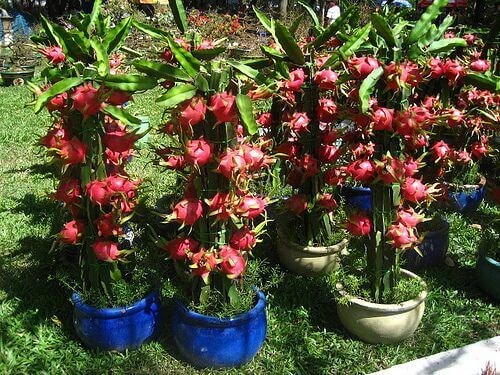
How Often Should You Water Tomato Plants in Georgia?
Tomatoes are one of the most popular vegetables grown in home gardens across Georgia. Known for their versatility and flavor, they thrive in the state’s warm climate. However, proper watering is crucial for achieving healthy plants and a bountiful harvest. This article will explore how often you should water tomato plants in Georgia, the factors influencing watering needs, and best practices for maintaining optimal soil moisture.
Understanding Tomato Plant Needs
Before diving into watering specifics, it’s essential to understand the basic needs of tomato plants. Tomatoes require:
- Adequate Water: Consistent moisture is vital for growth, development, and fruit production.
- Nutrients: Well-balanced soil with adequate nutrients supports healthy growth.
- Sunlight: Tomatoes thrive in full sun, needing at least 6-8 hours of direct sunlight daily.
- Air Circulation: Proper spacing between plants allows for good air movement, reducing disease risk.
Factors Influencing Watering Frequency
Several factors influence how often you should water your tomato plants in Georgia:
1. Soil Type
- Clay Soil: Retains moisture longer but can become compacted, leading to poor drainage. Watering may be less frequent.
- Sandy Soil: Drains quickly and dries out faster, requiring more frequent watering.
- Loamy Soil: Ideal for tomatoes, it retains moisture while allowing for good drainage. Watering frequency will fall between clay and sandy soils.
2. Weather Conditions
- Temperature: Hot, dry weather increases evaporation, necessitating more frequent watering.
- Humidity: High humidity can reduce water needs, while low humidity can increase them.
- Rainfall: Monitor rainfall; if significant rain occurs, you may need to adjust your watering schedule accordingly.
3. Plant Size and Stage of Growth
- Seedlings: Young plants require more frequent watering to establish roots.
- Established Plants: Once established, mature plants can tolerate slightly drier conditions but still need consistent moisture, especially during fruit development.
4. Mulching
Applying mulch around tomato plants can help retain soil moisture, reduce evaporation, and suppress weeds. This can reduce the frequency of watering needed.
General Watering Guidelines for Tomato Plants in Georgia
Here are some general guidelines for watering tomato plants in Georgia:
1. Frequency
- Newly Planted Seedlings: Water daily for the first week to establish roots. Afterward, water every 2-3 days, depending on soil moisture.
- Established Plants: Water deeply once a week, ensuring the soil is moist to a depth of at least 6-8 inches. In hot, dry weather, you may need to water twice a week.
2. Amount
- Aim for about 1-2 inches of water per week, either from rainfall or supplemental watering. Use a rain gauge to measure rainfall accurately.
3. Timing
- Water early in the morning to allow foliage to dry quickly, reducing the risk of fungal diseases. Avoid watering in the evening, as this can lead to prolonged moisture on leaves overnight.
Best Practices for Watering Tomato Plants
To ensure your tomato plants receive the right amount of water, consider the following best practices:
1. Check Soil Moisture
- Use your finger to check soil moisture. If the top inch of soil feels dry, it’s time to water.
- Alternatively, use a soil moisture meter for more accurate readings.
2. Water at the Base
- Water directly at the base of the plant to minimize wetting the foliage. This helps prevent diseases like blight.
3. Use Soaker Hoses or Drip Irrigation
- These methods deliver water directly to the soil, reducing evaporation and keeping foliage dry.
4. Adjust for Weather Conditions
- Be flexible with your watering schedule based on recent rainfall, temperature, and humidity levels.
Table: Watering Schedule for Tomato Plants in Georgia
| Plant Stage | Watering Frequency | Soil Moisture Depth | Notes |
|---|---|---|---|
| Seedlings | Daily for the first week, then every 2-3 days | 6-8 inches | Keep soil consistently moist |
| Established Plants | Once a week, more often in hot, dry weather | 6-8 inches | Adjust based on rainfall and temperature |
| During Fruit Development | Twice a week if needed | 6-8 inches | Ensure consistent moisture for fruit set |
Frequently Asked Questions (FAQ)
1. How do I know if my tomato plants need water?
Check the top inch of soil; if it feels dry, it’s time to water. You can also use a soil moisture meter for accuracy.
2. Can I overwater my tomato plants?
Yes, overwatering can lead to root rot and other diseases. Ensure the soil drains well and water only when necessary.
3. What is the best time of day to water tomatoes?
Early morning is the best time to water tomatoes, allowing foliage to dry quickly and reducing disease risk.
4. How can I reduce water evaporation from the soil?
Applying mulch around your tomato plants can help retain moisture, reduce evaporation, and suppress weeds.
5. Should I water my tomatoes differently if it rains?
Yes, adjust your watering schedule based on rainfall. If significant rain occurs, you may not need to water for a while.
Conclusion
Watering tomato plants correctly is crucial for their health and productivity, especially in Georgia’s warm climate. By considering factors such as soil type, weather conditions, and plant growth stage, you can develop an effective watering routine that ensures your tomato plants thrive. With proper care, you can enjoy a bountiful harvest of delicious tomatoes throughout the growing season.For more information on vegetable gardening in Georgia, you can refer to the University of Georgia Cooperative Extension here.





